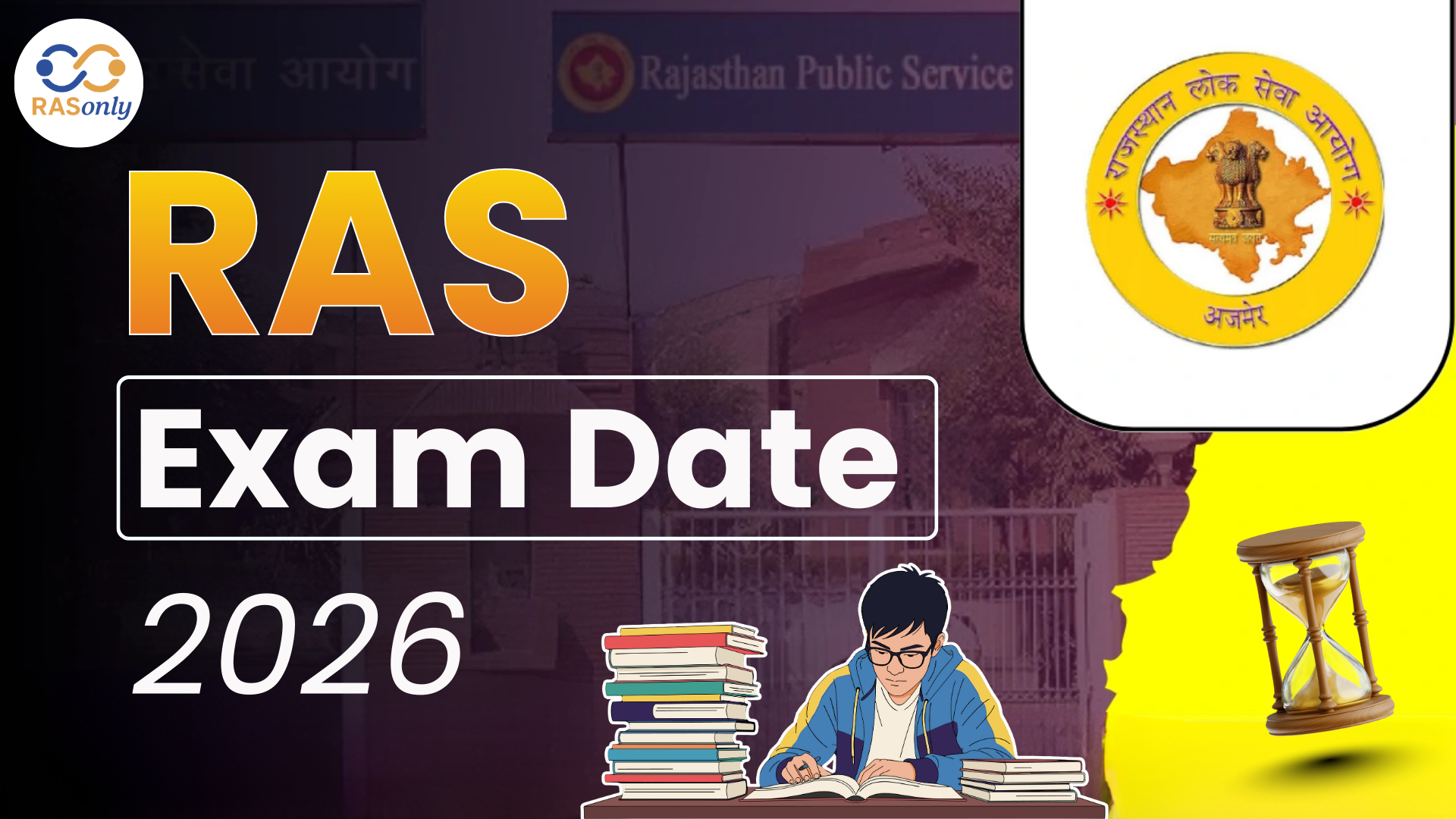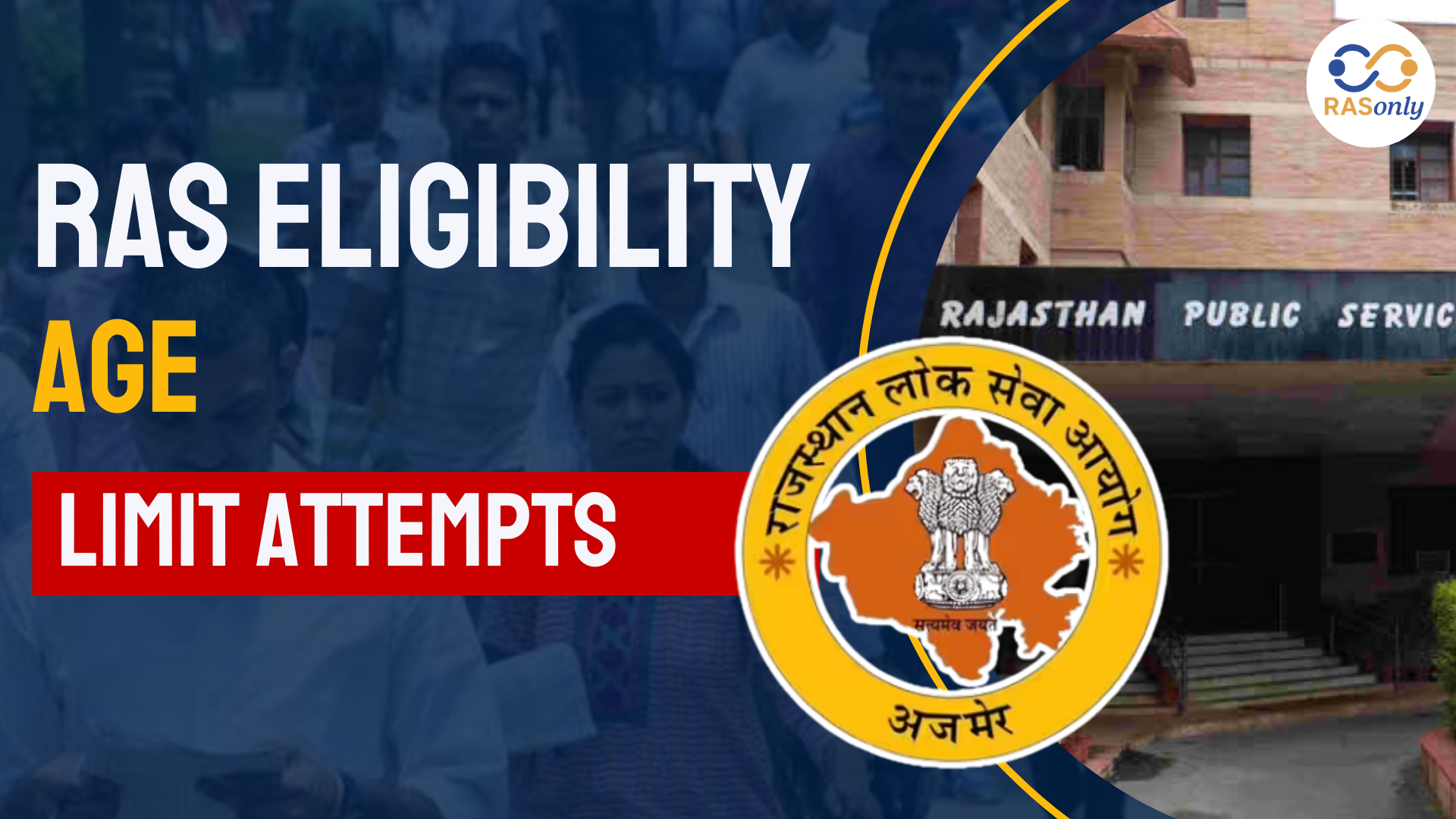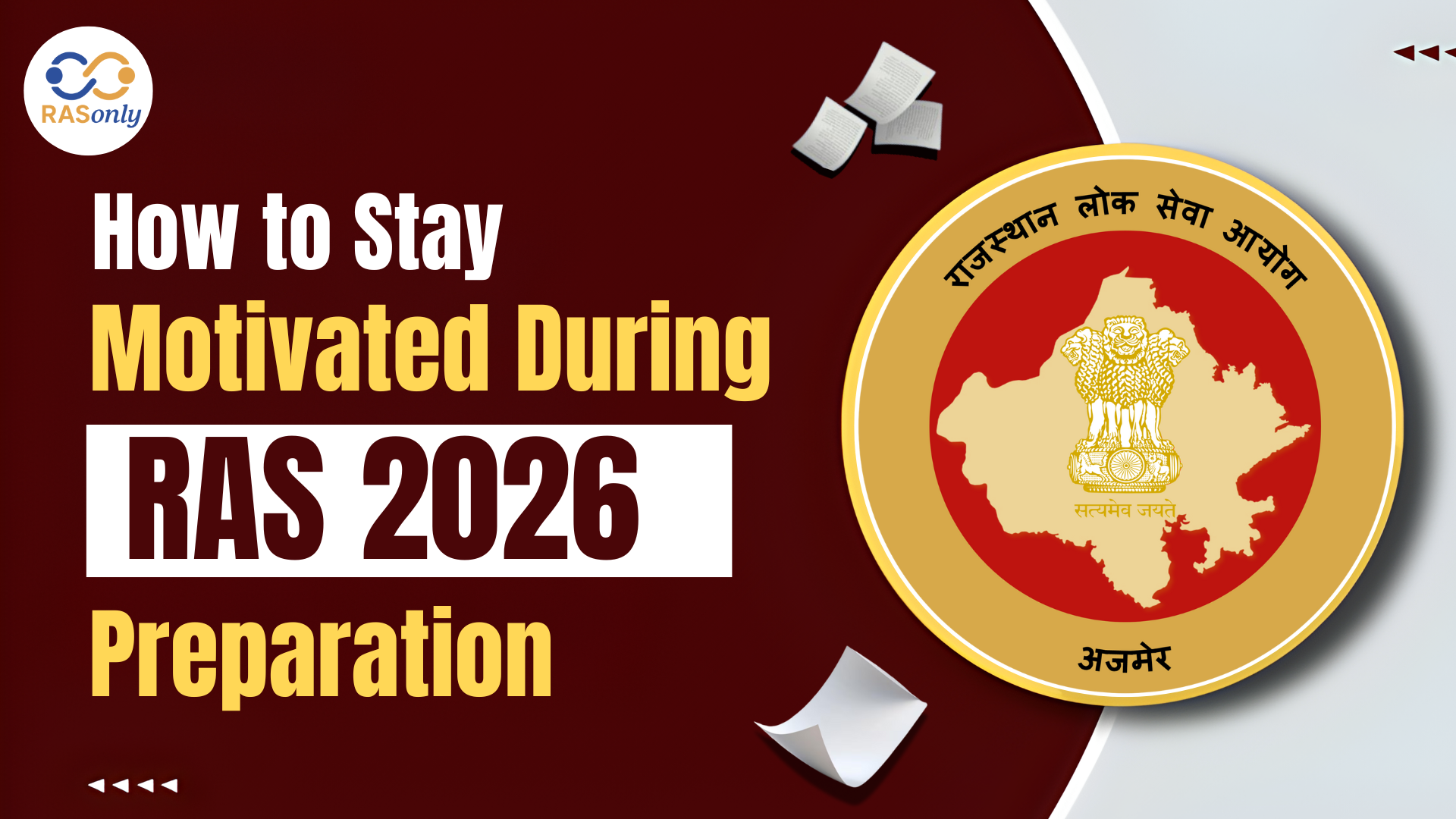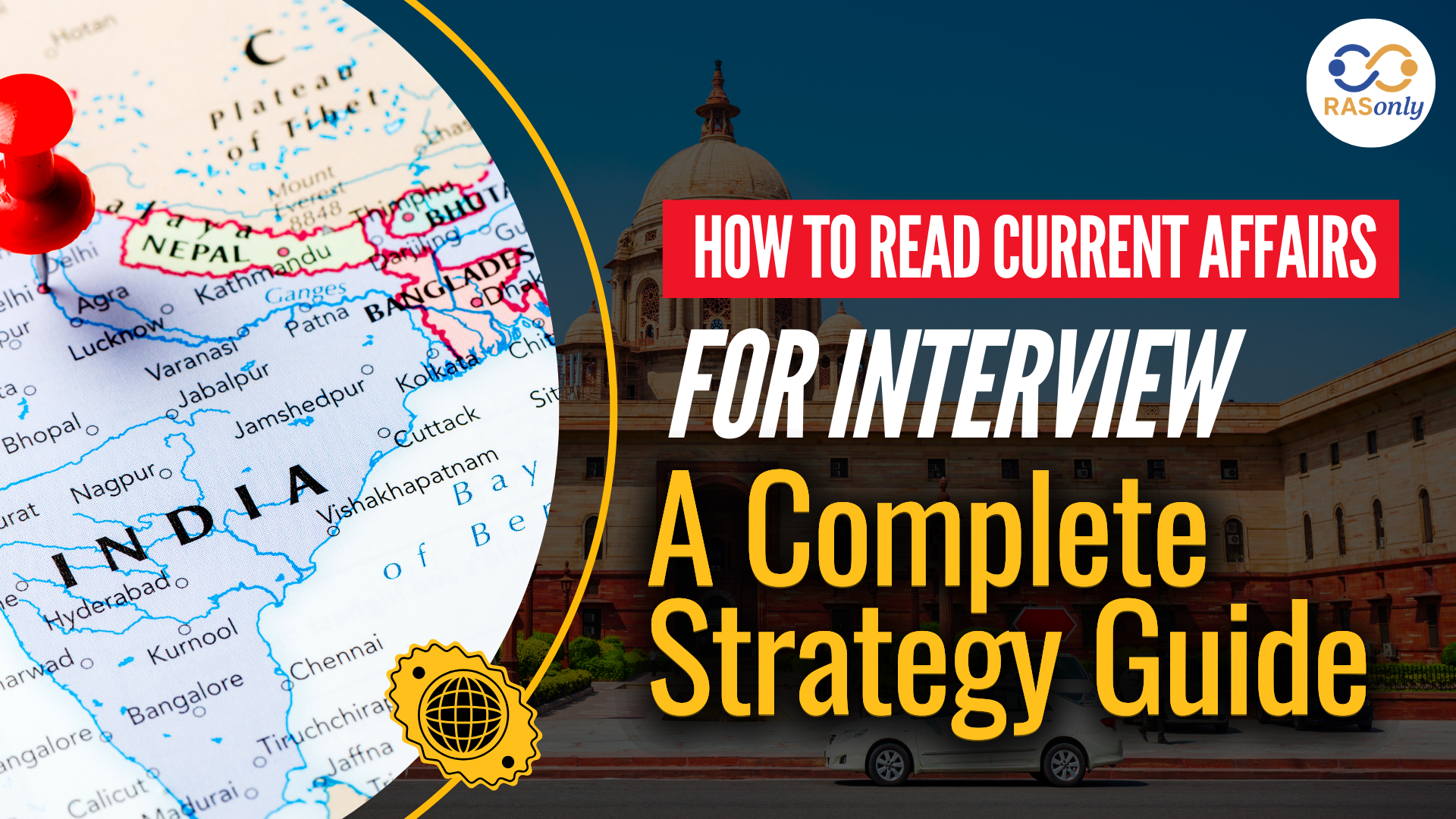RAS Exam Date 2026 for Notification, Prelims, Mains Date
- >
- RAS Preparation Resources
- >
- Child Marriage in India: Causes, Consequences & Measures
Child Marriage in India: Causes, Consequences & Measures

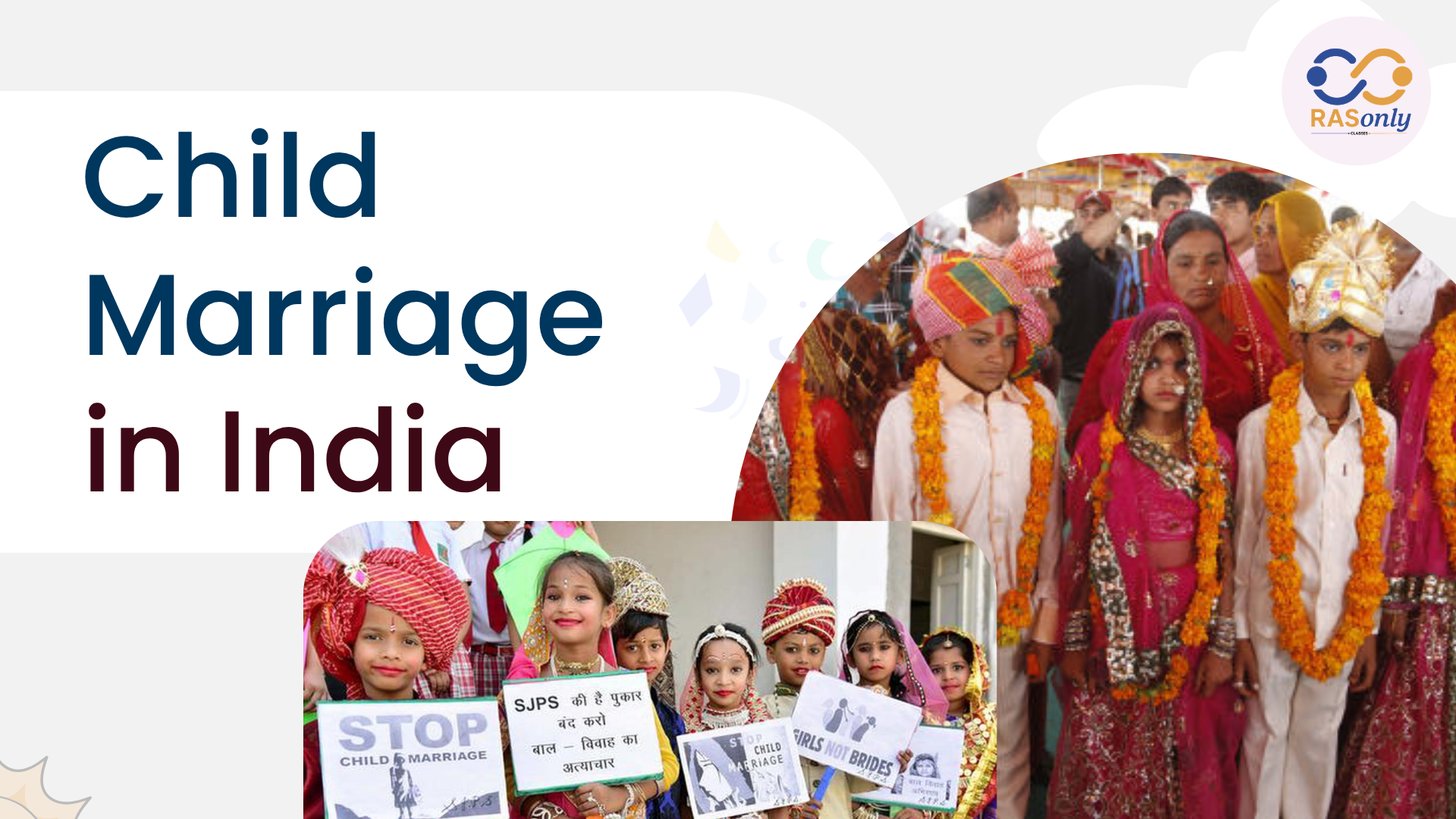
Child marriage is also one of the strongest social evils in India because it is affecting the rights, well-being and the future of millions of children in India and especially girls. Although progressive legislation, policy changes and national awareness campaigns exist, the practice still exists especially in disenfranchised and rural societies due to poverty, inequalities in gender, and the acceptability of traditional norms. Child marriage problem is not just a legal offence but a complex issue with five dimensions that include health, education, human right, and economic growth. The response to this problem is evident to one of the most important: inclusive growth and gender equity and, at large, the aim of child welfare and social justice in India.
What is Child Marriage?
- An activity in which people who are under the legal age set (18 years in girls and 21 years in boys) get married, leaving them without their basic rights, including education, health, and liberty.
- Child marriage is one of the common problems in India despite laws and awareness campaigns on this issue.
Prevalence
- India has the biggest proportion of global child brides, with 223 million women marrying before 18 (UNICEF, 2021).
Data related to child marriage in india
Key Details for RPSC RAS Mains
- Child Marriage Decline:
- The prevention of child marriages act (2006) reduced child marriages in India, which went down by half, that is 47.4 to 23.3 percent between 2019-2021.
- Last year the prevalence of child marriage was curtailed in approximately two lakh child marriages.
- Even though the number has reduced, one in five girls in India is married under the legal minimum of 18 years.
- Global Context:
- In South Asia, particularly in India, there has been a marked decline in child marriage in the world as per the newer reports credited to United Nations.
- ‘Bal Vivah Mukt Bharat Abhiyan’ Launch:
- States with high incidences of child marriages of West Bengal, Bihar, Jharkhand, Rajasthan, Tripura, Assam, and Andhra Pradesh will be targeted.
- The campaign is focusing on 300 high-burden districts; the rate of child marriage is above the national average.
- All the states and Union Territories are encouraged to formulate an action plan to bring down child marriage rate to below 5% by 2029.
- Key Features of the Campaign:
- Launch of the Child Marriage Free Bharat portal as an awareness, case reporting and monitoring platform.
- The campaign is inspired by the Beti Bachao, Beti padhao program and the recent Supreme Court judgments but centers on grass root level awareness and change of perceptions on child marriage.
- State Initiatives:
- State governments are giving 50,000 rupees award to gram panchayats, which avoids child marriages.
- Holistic Approach to Ending Child Marriage:
- Minister Annapurna Devi stressed that it is not only laws that could eliminate child marriage, it should be whole-of-government effort, which should include:
- Securing girls in education continuity.
- Encouraging women to work as well as absorb them through skilling.
- Response to women nutritional, reproductive health and safety outcomes.
- Addressing such topics as anti-trafficking and social protection.
- Minister Annapurna Devi stressed that it is not only laws that could eliminate child marriage, it should be whole-of-government effort, which should include:
Causes of Child Marriage:
- Traditional Practices: The culture is such that marriage should have more importance than education to girls.
- Family Honor: Marriage is considered as a tool to preserve the family glory and avoid sex before marriage.
- Poverty: Families that are economically pressed tend to get their daughters married at early ages in attempts to cut down the cost laid on households.
- Dowry: Lesser demands of dowry are usually associated with younger girls.
- Patriarchal Control: Early marriage secures the life of girls under control.
- Devaluation of Girls: Girls are regarded as burden and not asset.
- Illiteracy: Ignorance concerning outcome of child marriage is enhanced by lack of education.
- Limited Awareness: Poor and deprived regions do not face the publicity of awareness and law.
Consequences of Child Marriage:
- Maternal Health Risks: Child brides are at a higher risk when it comes to getting pregnant and delivering a baby because they are not physically developed.
- Infant Mortality: There is an increased rate of mortality of children born by young mothers.
- Disruption of Education: Early marriage derails the education of girls, which restricts their prospects in the future.
- Economic Dependency: Educational deprivation cuts down economic chances, further causing poverty.
- Psychological Trauma: Mental health problems and emotional disturbance are the outcomes of forced marriages.
- Domestic Violence: Brides who are young are prone to abuse.
- Population Growth: Child marriage is a factor that increases fertility and overpopulation.
- Gender Inequality: Enforces institutionalized gendered differences and discrimination.
Development of Laws Against Child Marriage in India
- The Age of Consent Act, 1891:
- Increased the legal age required to leave home to marry a woman raised the age of marriage, a legal age, for girls to leave home at 12 years old.
- Hindu Marriage Act, 1955:
- Make the legal marriage age 18-years old to girls and 21-years old to boys.
- The Child Marriage Restraint Act, 1929 (Sarda Act):
- Illegalized marriages involving girls under the age of 14 and boys under the age of 18, without nullifying child marriages.
- The Prohibition of Child Marriage Act, 2006:
- Increased the marriage age of girls and boys to eighteen and twenty-one respectively.
- Rendered the child marriages voidable and punished a person having a child marriage.
- Juvenile Justice Act, 2000:
- Guarded against the exploitation of children including that of child marriages through rehabilitation.
- POCSO Act, 2012:
- Legalized sexual contacts with underage children as annulment regardless of matrimonial status as statutory rape.
- Right to Education Act, 2009:
- Facilitates the delay of marriages since it ensures a free education until teenagers aged 14years thus leaving the school girl child to take longer in school.
- POCSO Amendment, 2019:
- Heightened punishment over sexual assault on minors including those subjected to child marriages.
- Child Marriage Prohibition Bill, 2018 (Proposal):
- Rudded up the legal age of girls to be married 21 years not 18 in order to curb more child marriages.
Efforts to Combat Child Marriage:
- Beti Bachao, Beti Padhao: Promotes gender equality and girls' education.
- Kanyashree Prakalpa (West Bengal): Provides financial incentives to delay marriage and encourage education.
- Conditional Cash Transfer Schemes: Programs like Apni Beti Apna Dhan incentivize families to keep girls unmarried until 18.
- Breakthrough India: Community-level awareness and education campaigns.
- Girls Not Brides: A global coalition advocating for policy changes and ending child marriage.
- UNICEF & UNFPA Programs: Collaborate to prevent child marriage through education and awareness.
Recommendations to Address Child Marriage:
- Monitoring: Close watch in the areas where child marriages are highly expected to avoid unlawful marriages.
- Penalties: Rapid response and punishment of violators to serve as the prevention.
- Education: Access to quality education among girls particularly in rural sectors.
- Incentives: Give out grants and financial encouragement to girls' studies.
- Livelihood Programs:Come up with provisions that can lessen the economic burden of families.
- Community Engagement: Mobilize community leaders, classroom educators and community health workers to work against the norms of the society.
- Media Campaigns: Emphasise the implications of child marriage and advocate equality between the genders.
- Life Skills Training: Give girls vocational training hence becoming financially independent.
- Participation: Girls' voices and choice in decision-making platforms.
Conclusion:
In India, child marriage is one of the greatest hindrances to the development of the children, which does not break the cycle of poverty, illiteracy, and gender disparity. A complex solution is needed, which will include legal enforcement, education, community engagement, and economic amplification to help eradicate child marriage and ensure a fairer future of children.
Post Category
- RAS Salary
- Result
- RAS Admit Card
- RAS Job
- RAS Cutoff
- Preparation Tips
- RAS Answer Key
- RAS Exam Analysis
- RAS Syllabus
- RAS Previous Year Papers
- RPSC RAS Exam Pattern
- RAS Interview
- RAS Mains Exam Date
- RAS Vacancy
- RAS Test Series
- RAS Best Books
- RAS Preparation Resources
- RAS Coaching Centre
- History
- Polity
- Geography
- Economics
- Science
- Art and Culture
- RPSC RAS Application Form
- RPSC RAS Notification
RASonly Interview Guidance Program

Mr. Ashok Jain
Ex-Chief Secretary Govt of Rajasthan
- IAS officer of the 1981 batch, Rajasthan cadre.
- Passionate about mentoring the next generation of RAS officers with real-world insights.
- Got retired in Dec 2017 from the post of Chief Secretary of the state of Rajasthan.

Mr. Guru Charan Rai
Ex-ASP / SP in Jaisalmer
- Guru Charan Rai, IPS (Retd), retired as Inspector General of Police (Security), Rajasthan, Jaipur in 2017.
- Served as ASP and SP in Jaisalmer, Nagaur, Sri Ganganagar, Sawai Madhopur, Dausa, Sikar, and Karauli.
- He also held key positions as DIGP and IGP in the Law and Order division.

Mr. Rakesh Verma
Ex-IAS Officer, B.Tech, MBA, and M.A. (Economics)
- IAS officer of the 1981 batch and retired in Chief Secretary Rank.
- Civil servant of high repute and vast experience.
- Has been teaching UPSC CSE subjects for the last six years.
Related Post
👉🏻 Register Today to Join Classes! 👍🏻
- Team RASOnly -
🎯 Benefits of RASOnly Coaching:
- ✅ 1:1 Mentorship with RAS Officers
- ✅ Experienced and Expert Faculty
- ✅ Free Library Access
- ✅ Daily Minimum 4 Hours Must
- ✅ Comprehensive Study Material
- ✅ Regular Tests & Performance Analysis
- ✅ Personalized Guidance & Doubt Solving
- ✅ Online & Offline Class Options
- ✅ Affordable Fees with Quality Education
Key Highlights:
- 👉🏻 3-Day Refund Policy
- 👉🏻 New Batch Starting from 04 August
- 👉🏻 Registration Amount: Only ₹1000

